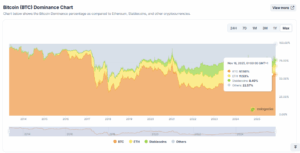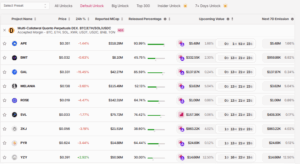
A sudden “run” on stablecoins could force the ECB to rethink its interest rate strategy.
His concern is not just technical, but deeply economic. A stablecoin run with large-scale redemptions could ripple through Europe’s economy and inflation dynamics.
Risks of a Stablecoin Run
Sleijpen pointed out that U.S. dollar–pegged stablecoins have exploded in size this year. Growing roughly 48% to exceed $300 billion, according to his Financial Times remarks. Many of these stablecoins are backed by U.S. Treasuries, meaning if large numbers of holders suddenly ask to redeem them for cash, that could force issuers to sell those assets quickly. Sleijpen warned that such a scenario might spark “rapid sell‑offs” and generate systemic risk — that is, risk that spreads throughout the global financial system, not just within crypto.
The problem is twofold. First, when stablecoin holders redeem in huge volumes, the collateral (for example, U.S. Treasury bonds) must be sold on short notice, potentially destabilizing those markets. Second, if Europe sees mass redemptions flowing out of stablecoins, the ECB might struggle to maintain control over liquidity. Also, inflation and interest rates.
According to the Financial Times, Dutch central bank governor and ECB member Olaf Sleijpen warned that a stablecoin run could force the ECB to adjust its interest rate path, with effects extending to Europe’s economy and inflation. He noted that U.S. dollar stablecoins have…
— Wu Blockchain (@WuBlockchain) November 17, 2025
Wider Economic Implications
If that scenario unfolded, Sleijpen argued, the ECB might be forced to adjust its interest rate path — either by raising or lowering rates — in response to financial instability. That could undermine its current monetary policy goals, which include managing inflation and supporting economic growth. In other words, even though stablecoins are “private” digital tokens, their scale could drag the ECB into unplanned monetary manoeuvres.
This risk is not theoretical. A similar tension is emerging in the regulatory realm: Christine Lagarde, president of the ECB, has recently called for strong safeguards on foreign stablecoins to prevent massive redemptions that could undermine European financial stability. Meanwhile, some EU banking regulators argue that existing rules under the Markets in Crypto-Assets (MiCA) framework could help, but only if enforced rigorously.
JANUARY 2025: E.U. Central Bank President Christine Lagarde says, “I’m confident bitcoins will not enter the reserves of any European central banks.”
TODAY: Czech Republic central bank buys $1 million bitcoin for its reserves pic.twitter.com/8AT4qp4EIh
— Bitcoin Archive (@BitcoinArchive) November 13, 2025
A real-world example: imagine a large stablecoin issuer like USDC or USDT — both backed by U.S. Treasury assets — facing a sudden wave of redemption demands. To raise cash, the issuer must sell its U.S. bond holdings. That could drive down Treasury prices and raise yields, affecting global financial markets. At the same time, European investors or businesses holding those stablecoins might pull out, draining liquidity. The resulting stress could force the ECB to interrupt its planned interest rate moves.
Disclaimer
The information provided by Altcoin Buzz is not financial advice. It is intended solely for educational, entertainment, and informational purposes. Any opinions or strategies shared are those of the writer/reviewers, and their risk tolerance may differ from yours. We are not liable for any losses you may incur from investments related to the information given. Bitcoin and other cryptocurrencies are high-risk assets; therefore, conduct thorough due diligence. Copyright Altcoin Buzz Pte Ltd.
The post ECB Warns Stablecoin Run Could Disrupt Europe’s Economy appeared first on Altcoin Buzz.




